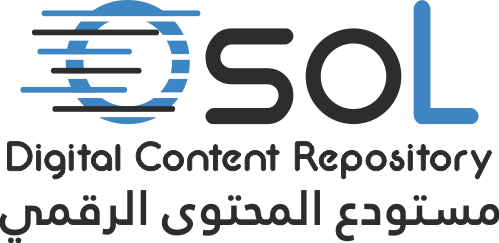الرجاء استخدام هذا المعرف للاستشهاد او الربط بهذا البحث :
https://dspace.qou.edu/handle/194/2590السجل الكامل للبيانات الوصفية
| حقل DC | القيمة | لغة |
|---|---|---|
| dc.contributor.author | Jehad Mohammed Abed Alrhman Al-Araj | - |
| dc.date.accessioned | 2021-11-22T08:21:33Z | - |
| dc.date.available | 2021-11-22T08:21:33Z | - |
| dc.date.issued | 2021 | - |
| dc.identifier.uri | https://dspace.qou.edu/handle/194/2590 | - |
| dc.description.abstract | This study aims to identify the level of social stigma and its relationship to future anxiety and social isolation among mothers of children with autism spectrum disorder in the Ramallah and Al-Bireh Governorate, and to achieve the objectives of the study, the relational descriptive approach was used. Three scales were used for the study: the social stigma scale, the future anxiety scale, and the measure of social isolation, applied to a sample included (101) mothers of children with autism spectrum disorder in Ramallah and Al-Bireh governorate. The results show that the level of social stigma was average, and the results indicated that there were no statistically significant differences in social stigma depending on the variables: the sex of the child, the child's age, the educational level of the mother, and the marital status, while the differences were statistically significant in the social stigma according to the variable of place of residence and in favor of (camp). The results show that the level of future anxiety was high, and the results indicated that there were no statistically significant differences in future anxiety according to variables: the sex of the child, the child's ege, the educational level of the mother, and the marital status, while the differences were statistically significant in future anxiety according to the variable of place of residence and in favor of (camp). The results also show that the level of social isolation was average, and the results indicated that there were no statistically significant differences in social isolation depending on the variables: the sex of the child, the child's age, the educational level of the mother, and the marital status, while the differences were statistically significant in social isolation according to the child’s age variable and in favor of (Less than 7years old). The results show a statistically significant association between social stigma and future anxiety in mothers of children with autism spectrum disorder, and the relationship was positive. Meaning, the higher the degree of stigma, the higher the level of future anxiety. It was also found that there is a statistically significant correlation between future anxiety and maternal social isolation, and the relationship was positive. Meaning, the greater the degree of future anxiety, the greater the level of social isolation. | en |
| dc.language.iso | ar | en |
| dc.publisher | جامعة القدس المفتوحة/Al-Quds Open University | en |
| dc.subject | social stigma, future anxiety, social isolation, autism spectrum disorder. | en |
| dc.subject | الوصمة الاجتماعية، قلق المستقبل، العزلة الاجتماعية، اضطراب طيف التوحد. | en |
| dc.title | Social Stigma and its Relation with Future Anxiety and Social Isolation Among Mothers of Children with Autism Spectrum Disorder in Ramallah and Al-Bireh Governorate | en |
| dc.type | Thesis | en |
| dc.description.arAbstract | هدفت هذه الدراسة التعرف إلى مستوى الوصمة الاجتماعية وعلاقتها بقلق المستقبل والعزلة الاجتماعية لدى أمهات أطفال اضطراب طيف التوحد في محافظة رام الله والبيرة، ولتحقيق أهداف الدراسة اسُتخدم المنهج الوصفي الارتباطي، حيث استخدمت ثلاثة مقاييس للدراسة، هي: مقياس الوصمة الاجتماعية، ومقياس قلق المستقبل، ومقياس العزلة الاجتماعية، طبقت على عينة ضمنت (101) من أمهات أطفال اضطراب طيف التوحد في محافظة رام الله والبيرة. أظهرت النتائج أن مستوى الوصمة الاجتماعية كان متوسطاً، وأشارت النتائج إلى عدم وجود فروق دالة إحصائياً في الوصمة الاجتماعية تبعاً لمتغيرات: جنس الطفل، وعمر الطفل، والمستوى التعليمي للأم، والحالة الاجتماعية، بينما كانت الفروق دالة إحصائياً في الوصمة الاجتماعية تبعاً لمتغير مكان السكن ولصالح (مخيم). وأظهرت النتائج أن مستوى قلق المستقبل كان مرتفعاً، وأشارت النتائج إلى عدم وجود فروق دالة إحصائياً في قلق المستقبل تبعاً لمتغيرات: جنس الطفل، وعمر الطفل، والمستوى التعليمي للأم، والحالة الاجتماعية، بينما كانت الفروق دالة إحصائياً في قلق المستقبل تبعاً لمتغير مكان السكن ولصالح (مخيم). كما أظهرت النتائج أن مستوى العزلة الاجتماعية كان متوسطاً، وأشارت النتائج إلى عدم وجود فروق دالة إحصائياً في العزلة الاجتماعية تبعاً لمتغيرات: جنس الطفل، وعمر الطفل، والمستوى التعليمي للأم، والحالة الاجتماعية، بينما كانت الفروق دالة إحصائياً في العزلة الاجتماعية تبعاً لمتغير عمر الطفل ولصالح (أقل من 7سنوات). وبينت النتائج وجود علاقة ارتباط ذات دالة إحصائياً بين الوصمة الاجتماعية وقلق المستقبل لدى أمهات أطفال اضطراب طيف التوحد، وجاءت العلاقة طردية؛ بمعنى أنه كلما ازدادت درجة الوصمة الاجتماعية ازداد مستوى قلق المستقبل. كذلك تبين وجود علاقة ارتباط دالة إحصائياً بين قلق المستقبل والعزلة الاجتماعية للأمهات وجاءت العلاقة طردية؛ بمعنى كلما ازدادت درجة قلق المستقبل ازداد مستوى العزلة الاجتماعية. | en |
| dc.contributor.arAuthor | جهاد محمد عبد الرحمن الأعرج | - |
| dc.arTitle | الوصمة الاجتماعية وعلاقتها بقلق المستقبل والعزلة الاجتماعية لدى أمهات أطفال إضطراب طيف التوحد في محافظة رام الله والبيرة | en |
| يظهر في المجموعات: | Psychological and Educational Counseling - الإرشاد النفسي والتربوي | |
:الملفات في هذا العنصر
| ملف | وصف | حجم | النوع | |
|---|---|---|---|---|
| Jehad-Al-Araj.pdf | 2.7 MB | Adobe PDF | عرض\فتح |
جميع جميع الابحاث محمية بموجب حقوق الطباعة، جميع الحقوق محفوظة.
